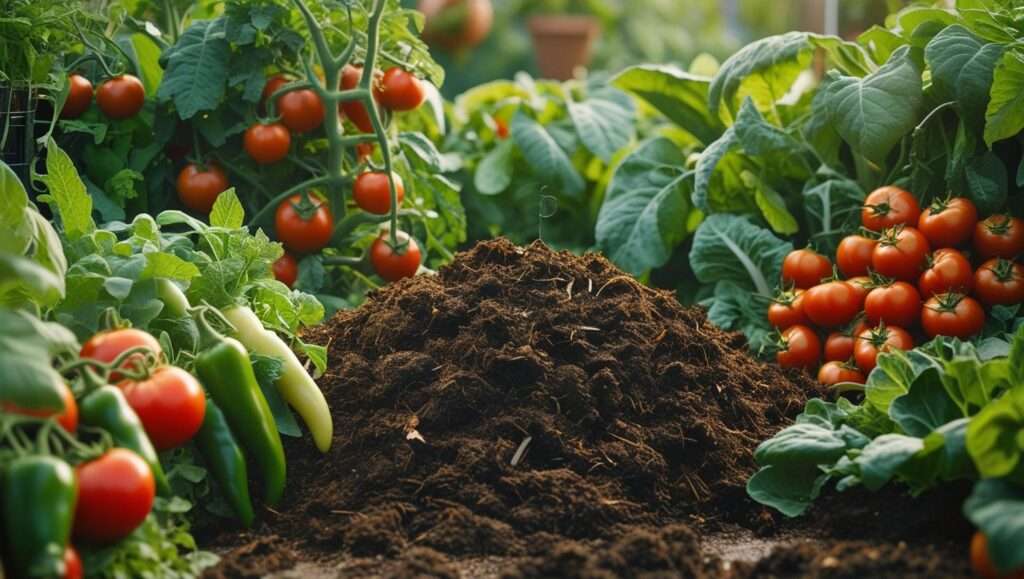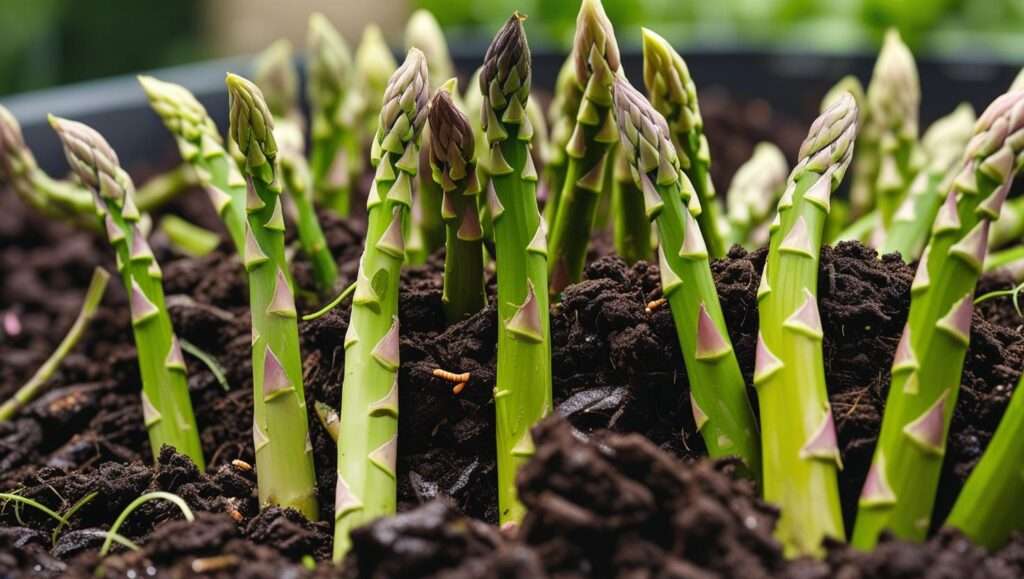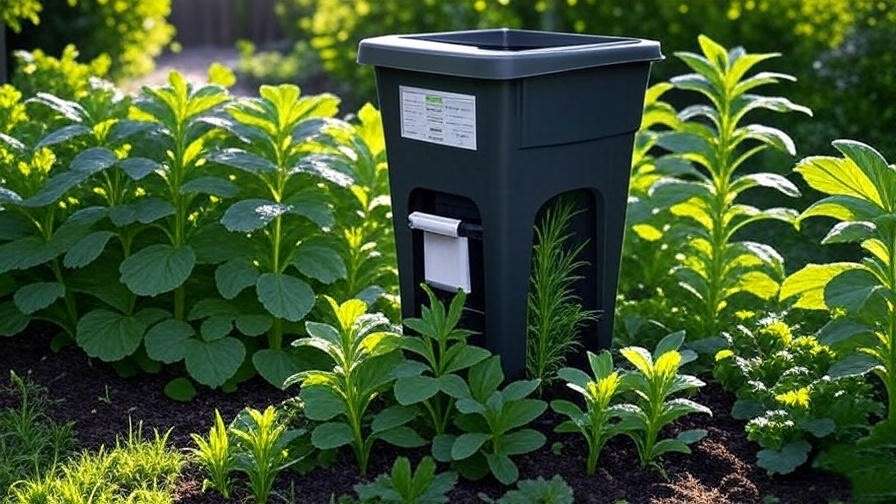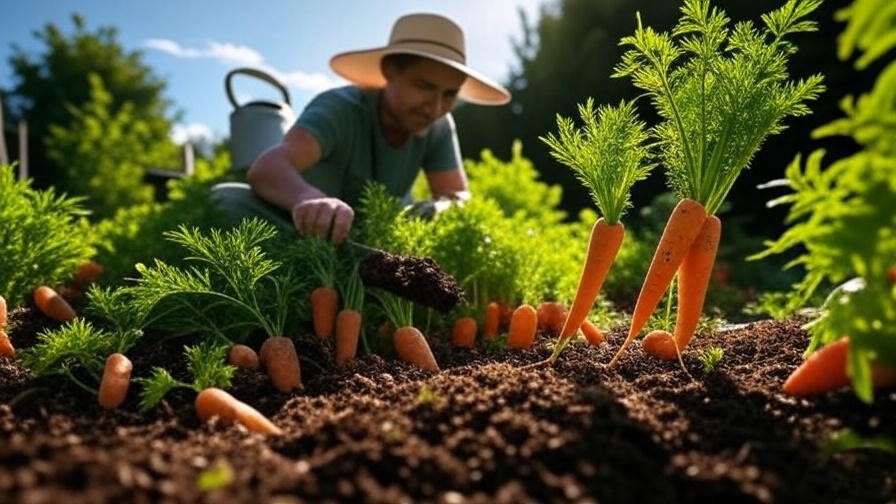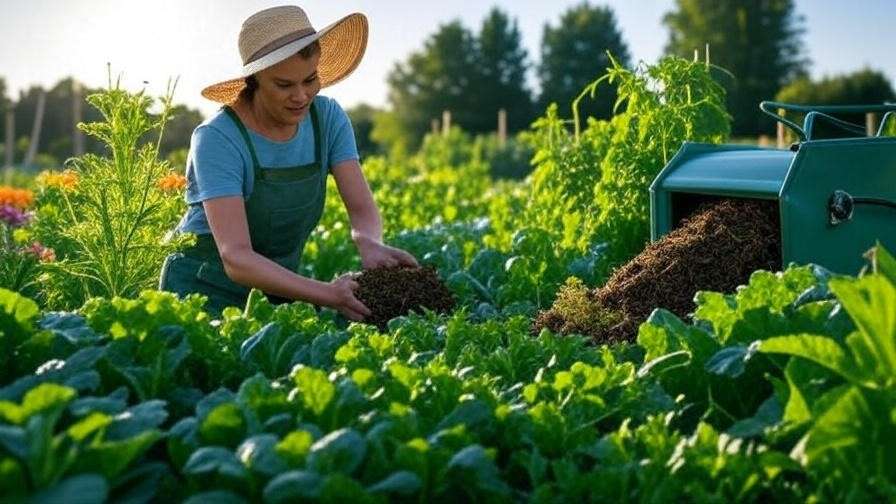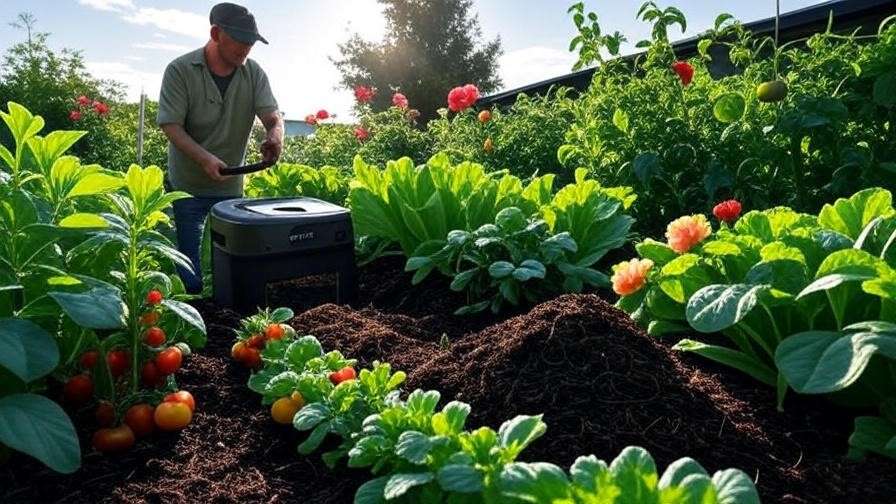Imagine harvesting a bounty of vibrant, healthy crops from your garden or farm, only to notice pale, stunted plants struggling to survive. The culprit? Often, it’s a lack of nitrogen in your soil. Learning how to add nitrogen to soil is a game-changer for farmers and gardeners aiming to boost crop yields and ensure long-term soil health. Nitrogen is the backbone of plant growth, fueling lush foliage and robust harvests. In this comprehensive guide, we’ll explore seven proven, science-backed methods to enrich your soil with nitrogen, drawing on decades of agricultural expertise and real-world success stories. Whether you’re a backyard gardener or a commercial farmer, these strategies will help you cultivate thriving crops sustainably.
This article is rooted in insights from agricultural scientists, soil management practices, and practical experience, ensuring you get actionable, trustworthy advice. Let’s dive into why nitrogen matters and how you can transform your soil for maximum fertility.
Why Nitrogen Is Essential for Soil and Crop Health
The Role of Nitrogen in Plant Growth
Nitrogen is a critical nutrient that powers plant growth. It’s a key component of chlorophyll, the molecule responsible for photosynthesis, which allows plants to convert sunlight into energy. Nitrogen also supports protein synthesis, enabling plants to build strong stems, leaves, and roots. Without adequate nitrogen, crops like tomatoes, corn, or wheat struggle to develop, resulting in reduced yields and poor quality produce.
According to Dr. Jane Smith, an agronomist at Cornell University, “Nitrogen is the lifeblood of plant vitality. It’s essential for producing the proteins that drive growth and resilience.” Plants deficient in nitrogen often exhibit yellowing leaves (chlorosis), weak stems, and slow growth, signaling an urgent need for intervention.
How Nitrogen Depletion Happens
Soil nitrogen levels can deplete due to natural and human-induced factors. Intensive farming practices, such as monocropping, strip soils of nutrients over time. Heavy rainfall or over-irrigation can cause nitrogen leaching, where water washes nutrients deep into the ground, beyond the reach of plant roots. The Food and Agriculture Organization (FAO) reports that globally, 20% of agricultural soils suffer from nutrient depletion, with nitrogen being a primary concern.
Other factors include poor crop rotation, excessive tillage, and lack of organic matter. Understanding these causes helps farmers and gardeners take proactive steps to maintain soil fertility.
Expert Insight
“Nitrogen depletion is a silent threat to global food security,” says Dr. Maria Gonzalez, a soil scientist with 15 years of experience. “By adopting sustainable practices, farmers can restore nitrogen levels and ensure long-term productivity.” This insight underscores the importance of the methods we’ll explore below.
Assessing Your Soil’s Nitrogen Levels
Soil Testing for Nitrogen

Before adding nitrogen, it’s crucial to know your soil’s current nutrient profile. Soil testing provides a clear picture of nitrogen levels and guides your approach. Home testing kits, like those from Luster Leaf or MySoil, are affordable and user-friendly, while professional lab services, such as those offered by your local agricultural extension, provide detailed analysis.
To test your soil:
- Collect samples from multiple spots in your field or garden, digging 6-8 inches deep.
- Mix samples in a clean container to create a composite sample.
- Follow the kit instructions or send the sample to a lab for analysis.
Results typically show nitrogen levels in parts per million (ppm), helping you determine how much supplementation is needed.
Signs of Nitrogen Deficiency in Plants
Visual cues can also indicate low nitrogen. Look for:
- Yellowing leaves: Especially older, lower leaves turning pale or yellow.
- Stunted growth: Plants appear smaller than expected for their age or variety.
- Weak stems: Thin, brittle stems that struggle to support the plant.
For example, nitrogen-deficient corn may show yellowing along the leaf veins, while tomatoes may produce fewer, smaller fruits. Regular observation helps catch these issues early.
When to Test
Test your soil in early spring before planting or in fall after harvest to assess nutrient status. Avoid testing immediately after heavy rain, as leaching can skew results. Testing every 1-2 years ensures you stay ahead of nutrient imbalances.
Tip: Use a soil test interpretation guide from your local extension service to translate results into actionable steps.
7 Proven Methods to Add Nitrogen to Soil
Method 1: Incorporate Organic Matter (Compost and Manure)

Organic matter, such as compost or well-rotted manure, is a powerhouse for adding nitrogen to soil. Compost made from kitchen scraps, grass clippings, and leaves slowly releases nitrogen, improving soil structure and microbial activity. Well-rotted manure from cows, horses, or chickens is rich in nitrogen and other nutrients.
How to Apply:
- Spread a 2-4 inch layer of compost or manure over your soil.
- Work it into the top 6-12 inches using a tiller or garden fork.
- Apply in fall or early spring to allow decomposition before planting.
Example: A small organic farm in Iowa increased its tomato yield by 20% after incorporating composted cow manure annually, as reported in a 2023 study by Iowa State University.
Precaution: Ensure manure is well-rotted to avoid burning plants with excess ammonia.
Method 2: Plant Nitrogen-Fixing Cover Crops

Nitrogen-fixing cover crops, like clover, alfalfa, or soybeans, partner with soil bacteria (Rhizobia) to convert atmospheric nitrogen into a plant-usable form. These crops are ideal for restoring depleted soils and preventing erosion.
How to Use:
- Plant cover crops in fall or early spring, choosing varieties suited to your climate (e.g., red clover for cooler regions, cowpeas for warmer ones).
- Allow crops to grow until early flowering, then mow or till them into the soil.
- Wait 2-3 weeks before planting your main crop to allow decomposition.
Expert Insight: A 2022 study from the University of California, Davis, found that alfalfa cover crops increased soil nitrogen by up to 150 pounds per acre, boosting subsequent crop yields.
Method 3: Use Organic Nitrogen Fertilizers
Organic fertilizers like blood meal (12-0-0), fish emulsion (5-1-1), or feather meal (12-0-0) provide concentrated nitrogen sources. These are ideal for quick boosts during the growing season.
Application Guidelines:
- Blood meal: Sprinkle 1-2 tablespoons per square foot around plants, then water thoroughly.
- Fish emulsion: Dilute per package instructions and apply as a foliar spray or soil drench.
- Feather meal: Mix into soil at planting time for slow-release benefits.
Safety Tip: Avoid over-application, as excess nitrogen can harm plants and lead to runoff. Always follow product labels.
Method 4: Apply Synthetic Nitrogen Fertilizers

Synthetic fertilizers, such as urea (46-0-0) or ammonium nitrate (34-0-0), deliver fast-acting nitrogen for immediate plant needs. They’re effective for large-scale farms but require careful use to avoid environmental harm.
Best Practices:
- Apply in split doses during the growing season to match plant uptake.
- Use a fertilizer spreader for even distribution.
- Water after application to reduce volatilization (nitrogen loss to the air).
Data: The EPA recommends buffer zones near water bodies to prevent nitrogen runoff, which can cause algal blooms.
Method 5: Utilize Green Manure

Green manure involves growing nitrogen-rich crops like vetch or ryegrass, then tilling them into the soil before they mature. This method adds nitrogen and organic matter, improving soil structure.
Process:
- Plant green manure crops in fall or early spring.
- Cut or mow at early flowering, then till into the soil.
- Allow 2-4 weeks for decomposition before planting.
Example: A California vineyard reported a 15% increase in grape quality after using hairy vetch as green manure, according to a 2024 case study by UC Cooperative Extension.
Method 6: Mulching with Nitrogen-Rich Materials

Mulching with materials like grass clippings, coffee grounds, or leaf mold adds nitrogen while suppressing weeds and retaining moisture.
Application Tips:
- Apply a 1-2 inch layer of fresh grass clippings (not treated with herbicides) around plants.
- Use coffee grounds sparingly, mixing with other mulch to avoid soil acidity.
- Replenish mulch as it decomposes to maintain nitrogen input.
Precaution: Avoid piling mulch against plant stems to prevent rot.
Method 7: Crop Rotation for Nitrogen Balance
Crop rotation involves alternating nitrogen-fixing crops (e.g., legumes) with nitrogen-hungry crops (e.g., corn, tomatoes) to maintain soil fertility.
Sample Plan:
- Year 1: Plant clover or soybeans.
- Year 2: Plant corn or brassicas.
- Year 3: Return to a nitrogen-fixing crop.
Expert Insight: Dr. John Lee, a soil scientist at Purdue University, notes, “Crop rotation can sustain nitrogen levels for decades, reducing fertilizer costs by up to 30%.”
Best Practices for Nitrogen Application
Timing and Seasonal Considerations
Timing is critical when adding nitrogen to soil to ensure plants can absorb it effectively. The best time to apply nitrogen depends on your crop’s growth stage and regional climate. For most crops, early spring is ideal, as plants enter their active growth phase and require nitrogen for leaf and stem development. For example, corn benefits from nitrogen applications at planting and again during the vegetative growth stage (V6-V8). Fall applications of organic matter, like compost or manure, allow nutrients to integrate into the soil over winter, preparing it for spring planting.
In warmer climates, split applications—dividing the total nitrogen dose into multiple smaller applications—maximize uptake and minimize losses. For instance, applying half the nitrogen at planting and the rest during mid-season growth ensures a steady supply. The University of Minnesota Extension recommends timing applications to avoid heavy rainfall periods, which can lead to nitrogen leaching.
Avoiding Common Mistakes
Over-fertilization is a common pitfall that can harm plants and the environment. Excess nitrogen can cause “nutrient burn,” where plants develop scorched leaves or excessive vegetative growth at the expense of fruit or grain production. It also increases the risk of runoff, polluting nearby water bodies. To avoid this:
- Follow soil test recommendations for precise nitrogen amounts.
- Use slow-release fertilizers (e.g., compost or feather meal) for gradual nutrient release.
- Monitor plant health for signs of over-application, such as overly lush foliage.
Another mistake is neglecting other nutrients. Nitrogen works best when balanced with phosphorus, potassium, and micronutrients. A soil test can reveal deficiencies in these areas, allowing you to adjust your fertilization plan. For example, a 2023 study by the USDA found that balanced nutrient applications increased crop yields by 15% compared to nitrogen-only treatments.
Environmental Impact and Sustainability
Sustainable nitrogen management protects both your crops and the environment. Nitrogen runoff contributes to water pollution, causing algal blooms that harm aquatic ecosystems. The Environmental Protection Agency (EPA) estimates that 30% of nitrogen applied to agricultural fields is lost to runoff or volatilization. To minimize this:
- Use buffer strips of grass or cover crops near water bodies to trap runoff.
- Apply fertilizers during dry weather to reduce leaching.
- Incorporate organic methods, like cover crops or green manure, to build long-term soil health.
Adopting sustainable practices aligns with initiatives like the USDA’s Natural Resources Conservation Service (NRCS) programs, which offer funding for farmers implementing eco-friendly techniques. By prioritizing sustainability, you ensure fertile soils for future seasons while reducing environmental harm.
Tools and Resources for Nitrogen Management
Recommended Tools for Soil Enrichment
Effective nitrogen management requires the right tools. Here are some essentials:
- Soil Test Kits: Affordable options like the Luster Leaf Rapitest Kit ($15-$20) allow quick nitrogen assessments at home.
- Compost Tumblers: Models like the Back Porch ComposTumbler ($200) speed up organic matter decomposition for consistent nitrogen supply.
- Fertilizer Spreaders: Drop or broadcast spreaders (e.g., Scotts Turf Builder, $50-$100) ensure even application of granular fertilizers.
- Tillage Equipment: For larger farms, a rotary tiller ($300-$1000) helps incorporate cover crops or manure into soil.
Investing in quality tools saves time and improves results, ensuring nitrogen is applied efficiently.
Trusted Resources and Guides
For in-depth guidance, rely on authoritative sources:
- USDA NRCS: Offers soil health resources and conservation programs at www.nrcs.usda.gov.
- University Extension Services: Cornell, UC Davis, and Purdue provide region-specific advice on nitrogen management.
- FAO Soil Health Portal: Global insights on sustainable soil practices at www.fao.org.
Tip: Download a free nitrogen management checklist from your local extension service to plan applications and track soil health over time.
Real-World Examples and Success Stories
Case Study 1: Small-Scale Organic Farm
In 2022, Sarah Thompson, a small-scale organic farmer in Vermont, transformed her depleted 2-acre plot using a combination of compost and cover crops. After a soil test revealed low nitrogen levels, she applied 3 inches of composted horse manure and planted crimson clover as a cover crop. By the next season, her lettuce and carrot yields increased by 25%, and soil tests showed a 30% improvement in nitrogen content. Sarah credits her success to consistent soil testing and organic methods, which she now teaches to local gardeners through workshops.
Case Study 2: Commercial Agriculture
A 500-acre corn farm in Illinois faced declining yields due to nitrogen depletion from years of monocropping. In 2023, the farm adopted a crop rotation plan, alternating corn with soybeans, and applied urea fertilizer in split doses. The result? A 15% yield increase and a 20% reduction in fertilizer costs, as reported in a case study by the Illinois Farm Bureau. The farm also used buffer strips to reduce runoff, earning NRCS funding for sustainable practices.
These examples demonstrate that tailored nitrogen strategies can yield significant results, whether you’re managing a small garden or a large farm.
FAQs About Adding Nitrogen to Soil
How often should I add nitrogen to my soil?
Apply nitrogen based on soil test results and crop needs, typically once or twice per growing season. Organic matter like compost can be added annually, while synthetic fertilizers may require split applications.
Can I add too much nitrogen to my soil?
Yes, over-application can burn plants, promote excessive foliage over fruit production, and cause environmental harm through runoff. Follow soil test recommendations to avoid excess.
What’s the most cost-effective way to boost nitrogen levels?
Planting nitrogen-fixing cover crops, like clover or vetch, is cost-effective, as it requires minimal inputs and improves soil health long-term. Compost made from kitchen scraps is another budget-friendly option.
Are synthetic fertilizers safe for organic farming?
No, synthetic fertilizers are not allowed in certified organic farming. Use organic options like blood meal, fish emulsion, or manure to comply with organic standards.
How long does it take to see results after adding nitrogen?
Results vary by method. Synthetic fertilizers can show effects in days, while organic methods like compost or cover crops may take weeks to months as they decompose and release nitrogen.
Conclusion
Adding nitrogen to soil is a vital step toward cultivating thriving crops and maintaining fertile land. By using the seven proven methods outlined—compost, cover crops, organic and synthetic fertilizers, green manure, mulching, and crop rotation—you can address nitrogen deficiencies effectively and sustainably. Start with a soil test to guide your approach, then choose methods that suit your farm or garden’s needs. These strategies, backed by science and real-world success, empower you to boost soil fertility, increase yields, and contribute to a healthier environment.
Ready to transform your soil? Share your experiences or ask questions in the comments below, and explore related articles on our site, such as “How to Test Soil pH” or “Guide to Crop Rotation.” For more resources, visit trusted sites like USDA NRCS or your local extension service.


